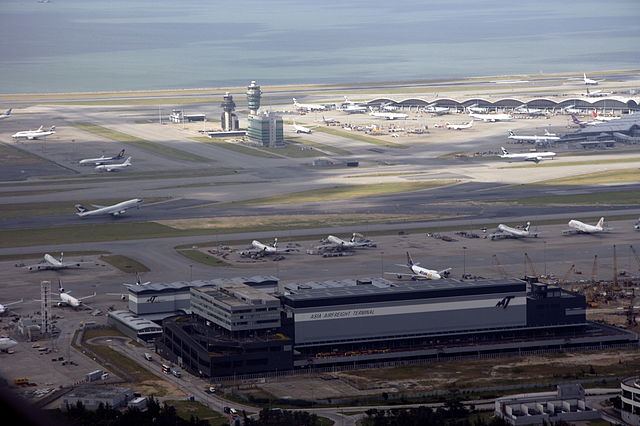 The world’s airports achieved only a modest 2.6% growth in total cargo volumes for 2015 to 106 million metric tonnes as a result of subdued growth in emerging markets and developing economies, coupled with a more modest recovery in advanced economies, according to the Airports Council International’s 2015 ACI World Airport Traffic Report.
The world’s airports achieved only a modest 2.6% growth in total cargo volumes for 2015 to 106 million metric tonnes as a result of subdued growth in emerging markets and developing economies, coupled with a more modest recovery in advanced economies, according to the Airports Council International’s 2015 ACI World Airport Traffic Report.
Air transport hubs in the Asia-Pacific region handled the largest amount of cargo during 2015, lifting 41.1 million metric tonnes in 2015, up 2.3% over 2014.
North America followed (30 million metric tonnes, up 3.1% over 2014), then Europe (18.9 million metric tonnes, up 0.5% over 2014), the Middle East (8.5 million metric tonnes, up 9.9% over 2014), Latin America-Caribbean (4.9 million metric tonnes, down 1.3% from 2014), and Africa (2.1 million metric tonnes, up 3.5% over 2014)
The world’s air cargo market is highly concentrated, with the top 30 air cargo hubs handling 58% of global air cargo volumes.
Hong Kong and Memphis remained the busiest airports in terms of air cargo traffic (4.46 million and 4.29 million metric tonnes of cargo, respectively. The two Shanghai airports—Pudong and Hongqiao—handled 3.71 million tonnes combined, taking the third position in the air cargo hubs ranking.
The world’s busiest international airport in terms of international freight traffic is Hong Kong (4.38 million metric tonnes, up 0.1% over 2014). Behind the Asian gateway are Dubai, United Arab Emirates (2.51 million metric tonnes, up 3.4% over 2014), and Incheon, South Korea (2.49 million metric tonnes, up 0.6% over 2014)
The world’s busiest domestic airports as measured by domestic freight traffic are Memphis, U.S. (4.1 million metric tonnes, up 1.4% over 2014); Louisville, U.S. (1.8 million metric tonnes, up 3% over 2014); and Beijing, China (1.2 million metric tonnes, up 3.9% over 2014).
Looking at the overall prospects of the air transport industry, the report underscored the importance of maintaining “cautious optimism” for the rest of the year, noting several impediments that could encumber growth over the short and medium terms.
These include geo-political unrest, terrorism, and threats to security in certain parts of the world. Physical capacity considerations and potential bottlenecks in air transport infrastructure also pose challenges in accommodating future air transport demand.
Finally, protectionist policies that retreat from further economic integration and air transport liberalization could have adverse contractionary effects on the industry.
“Irrespective of the challenges that (lie) ahead, by and large, the evidence of history supports the long run resiliency of the industry where connecting people, places, cultures and commerce is paramount in the shared mission of the aviation community,” said ACI.
The World Airport Traffic Report, ACI’s flagship publication, provides the latest airport traffic data, rankings, and trends on air transport demand culled from information sourced from over 2,300 airports in 160 countries worldwide.
Photo: J Aaron Farr





